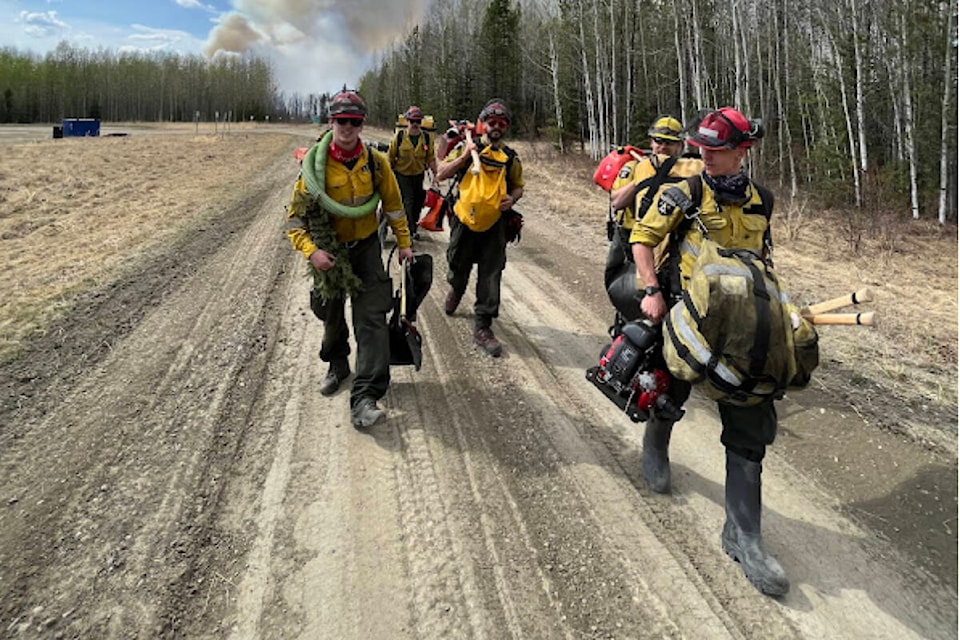Albertans’ safety is at risk if the province doesn’t offer better pay, benefits, working conditions and stable employment for those who fight wildfires, says the Alberta Union of Provincial Employees.
AUPE vice-president James Gault said once again Alberta is not prepared for wildfire season. There’s not enough staff, especially experienced staff.
“The province has always said that they can get the resources when needed. In this situation, having the resources when needed is having them upfront,” said Gault, adding the province is willing to rely on firefighters from outside the province and country.
“By ignoring our frontline responders, we’re going to lose somebody at some point, we’re going to lose property that we’re not prepared for.”
He said this year, there will be many crews of brand-new firefighters led by people with only two years of experience. The government has also indicated it wants to move to night patrols.
“It’s hard enough to find the snags (dead standing trees) in the day time, let alone at night time with a little tiny helmet light. Trees fall, and you have no idea where they’re falling.”
Related:
Alberta to add firefighters for expected busy wildfire season: minister
AUPE members working for Alberta Wildfire say the organization is suffering a retention and recruitment crisis that began four years ago under the previous UCP government. Experienced wildfire fighters have left for more competitive organizations, such as British Columbia Wildfire Service and Parks Canada.
In the last couple of years, the wildfire budget has been reduced by over $30 million. Several cuts to wildfire fighting services have been made in recent years, including the number of jobs in watchtowers and specialized programs, like rappel crews, Gault said.
As of Feb. 10, there were 57 wildfires burning in Alberta already, 54 of which are carry-over fires from last season that have sprung into flame after smouldering underground over the winter.
“We had a very warm winter. If anything were to happen right now, we would not have the crews to go out.”
Last year, the province saw a total of 1,088 wildfires that burned about 22,000 square kilometres from March 1 to Oct. 31. The five-year average for area burned is 2,262 square kilometres.
“We don’t want to go through evacuations again when we could, at the end of the day, have prevented it if we had a little more forward thinking,” Gault said.
Related:
Wildfires in Alberta burned 10 times more area in 2023 than the five-year average
Alberta Forestry and Parks said in a statement that wildland firefighter hiring and training are on schedule.
“Alberta’s government wants to assure Albertans that preparations for the 2024 wildfire season have been underway for months. So far in 2024, 196 wildland firefighters and support staff have been hired. In addition to government wildland firefighters, we have also secured Firetack contracts for when additional resources are required,” the statement said.
This year, Alberta Wildfire has used an Expression of Interest process to secure positions for returning seasonal staff from the previous wildfire season, ensuring there are experienced staff on the front lines.
Alberta Wildfire has also piloted a speed interview process for hiring wildland firefighter crews. In the 2024 wildfire season, wildland firefighters will start earlier and be given the opportunity to work later in the season if conditions require it.
— with files from The Canadian Press
szielinski@reddeeradvocate.com
Like us on Facebook and follow us on Twitter
